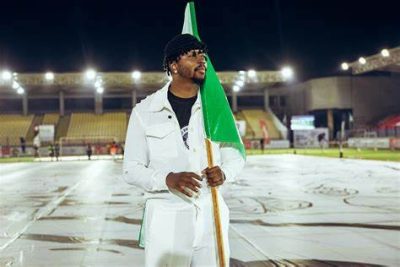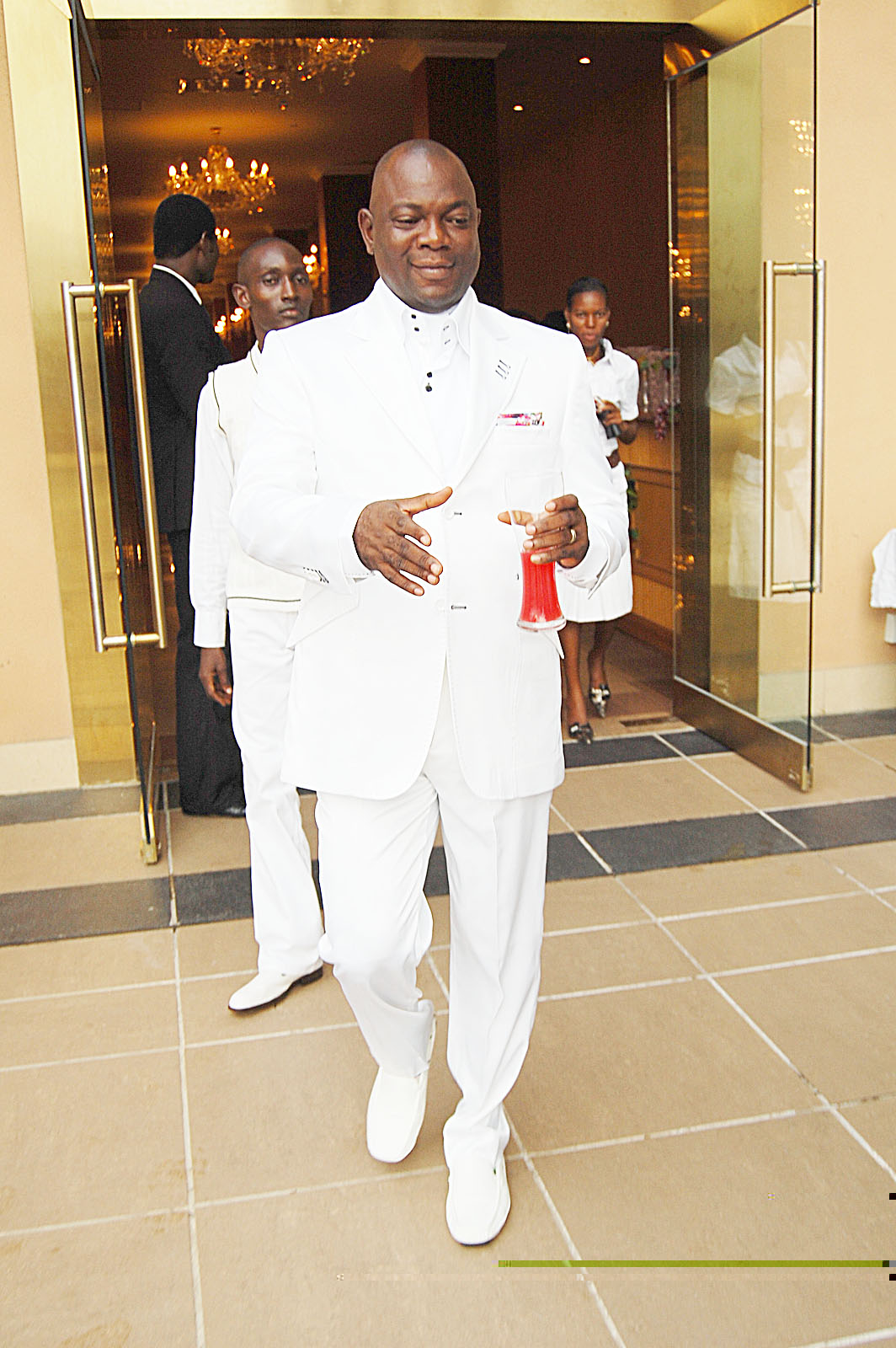At a time when existing divisions within the country seems to have been further deepened along religious and ethnic lines, one the many Nigerian
At a time when existing divisions within the country seems to have been further deepened along religious and ethnic lines, one the many Nigerians who still believes that the country is still capable of achieving peaceful co-existence despite our diversity is Dr Adefemi Gbadamosi more popularly known as Fola David. The medical doctor, visual and hyper realism artist who recently achieved the feat of the largest drawing in the world by an individual by Guinness World Record standards with his painting aptly titled, ‘Unity in Diversity,’ he opens up on why he embarked on achieving the feat.
It feels like a dream come true. This idea came up nine years ago while I was still in medical school. Finally achieving this feat tells me that you should never give up on your dreams.
We are collating our evidence for the Guinness World Record, and we are very confident on getting their seal of approval.
The drawing is titled ‘Unity in Diversity’. It is a project aimed at celebrating how unique Nigeria is and showcasing the beauty that resides in our different cultures.The drawing, ‘Unity in Diversity’, showcases the diverse ethnic groups of Nigeria through their unique attire, languages, culture, and artistic expressio
I set out to create a drawing that depicted the multicultural heritage of my country. I also embarked on a journey to different parts of the country as a knowledge seeking mission, this journey was to help me gain useful insights and experience the various cultures that exist in Nigeria. I was able to interact with individuals and custodians of these cultures on the months leading up to the world record event. This helped me ensure the drawing was made to incorporate the hearts and stories of Nigerians living together with different ways of life and how they have embraced other cultures and traditions. The world record drawing will not only serve as a reflection of cultural identities but also as a medium for building understanding and unity among diverse Nigerian tribes thereby promoting
So far, yes. It won’t be long before something bigger comes and take over though, I have a lot of big dreams to fulfill.What were some of the challenges you experienced while preparing for and during the drawing?
One of the biggest challenges which also led to this project taking nine years was funding. The world record for the largest drawing by an individual is not a cheap record to break. I was blessed to meet my sponsors, TOLARAM which was a very important push for me to embark on this journey. Many challenges came up especially during my travel around the country, but I was able to meet a lot of well-meaning Nigerians who supported his dream and assisted me during my travels to the different states in Nigeria. The venue was also very important, and the Lagos state government supported in that regard while also ensuring that other state agencies were on board to ensure a conducive environment for me to undertake the task without distractions. It is important to note that this has never been done before therefore every challenge we faced during this world record project was new and we needed to always find creative ways to surpass them and I am very grateful for the experience. I got exhausted a lot of times; I also felt a lot of pain, but I never thought of giving up. I kept pushing myself to ensure that the record was not only beaten from a previous 629.98 square meters but a new worthwhile record was set at 850 meters. I didn’t just stop there, I expanded it further to 1,000 square meters.
My desire to see this dream to the end was a huge drive for me. The number of people that also showed their support and believed in the dream also gave me the push I needed to keep going. The importance of the message that I wanted to pass was also very key and I knew I had to complete this work.
I wouldn’t say that I am the first. I’m pretty sure that there were others before me. I guess what it really means is that my work is distinguished in some way. Besides, I have taken speed painting to heights that no other speed painter in Nigeria has been able to do.
It is an artistic style where the artist creates an art piece in a very short time. It can be considered a performance painting if the artist does it to a crowd and infuses some movement or fancy fast strokes to his work or in my case paint the image upside down.
I work as a contemporary hyper realist and this is where I use charcoals and graphite to paint.
Well, I use my art to create awareness on medical conditions, especially in the field of dermatology. Art is a powerful tool to send messages with and communicate with individuals or different races, cultures and backgrounds.

I wouldn’t call my art something I do in my pastime. It is my profession. Yes, I have two professions. I am able to carry on with both because I am passionate about healthcare, just as I am about art. Also, I plan my time effectively so there is no basis for both clashing.
It began in my 400 level in the College of Medicine, University of Lagos where I painted during a school event. The reaction I got from the crowd when I was done, pushed me to do more and that was how it began. I started moving from shows to shows just looking for different platforms to show my work.
I am paid for every painting I do. It is an industry on its own and just like every other performing arts, it is quite lucrative.
Yes, I do. I have exhibited in different countries across the world, including Nigeria, USA, UK, Italy, Spain, Germany and even here in Nigeria. I have exhibited my work at the art pantheon in Oniru, Lagos. And like I mentioned earlier, the GWR painting will be set up at the Lagos Free Trade Zone in about three months’ time, on a permanent site for the viewing pleasure of Nigerians.
I have done so many and I actually consider them all very significant but right off the top of my head, I would say two of my works which I aptly named ‘Resilience I and ‘In the arms of Morpheus’. When these particular works were exhibited, I remember many people bidding for them simultaneously.
I am inspired by everything around me, my day-to-day interaction with people and what I see or hear happening around me.
I remember that I was always called a doctor right from when I was in primary school. I guess it just grew on me and when it came to selecting a course to study, I just chose medicine and surgery.
I have a special interest in dermatology and surgery.
This is because I love working with the human skin, whether in my art or in the hospital because I know my hands to be quite steady and reliable.
Many of my patients don’t even know who I am. But those that do absolutely love the level of care and professionalism I put into what I do.
I don’t think I will ever stop being both a doctor or a visual artist. It provides me a unique perspective of life and a beautiful chance to show the world the endless possibilities of the human life.
I campaign against the social stereotypes of skin disorders like wrinkles, vitiligo, freckles, stretch marks, ichthyosis and other skin conditions. Many people have fallen victim to society’s idea of what your skin should be like. There are many unrealistic ideas out there on what kind of skin people should be comfortable in. This has led to low self-esteem, depression and many people using very harmful products on their skin, all with the aim of achieving the “perfect” skin. My skin positivity project aims to encourage people to love themselves irrespective of their skin type, to boost their confidence and reduce the stigma associated with many visible skin conditions.
It all came up from my interaction with my patients. I got to see the side most people do not see. How people have to live with the constant stares, endless questions and poking. I really just wanted to do something to help a lot more people I know are going through that emotional and psychological trauma of having certain skin concerns.
The FolaDavid foundation was born out of love for healthcare and art.
We have been able to carry out free medical outreaches in different parts of Nigeria and cater to over 5,000 people. Our creative projects have seen us set up visual development centers in Nigeria and in South Africa. We help children in various cities to harness their talents in visual art and give them a platform to show their works to the world. The South African National Lotteries Commission, NLC, gave us a yearly grant of $25,000 to do just that. We plan to take this to many other African countries. One thing I remember saying to myself a lot when I started my journey as an artist was that “I wish I started earlier…” I realised my major challenge was not even knowing what I had and what I can do with it. These centres help to deal with that challenge by helping children in different communities have access to tools, to mentorship, to platforms of expression and create a community of young budding artists
Growing up was quite uneventful. I was a very bright student and that was mostly what my life revolved around. I didn’t start living till I got to the university and started drawing and painting.
The people I met along the way, how they lived their lives and how they were able to achieve success has really influenced me greatly.
It doesn’t matter how slowly you move as long as you do not stop.
I love watching movies a lot! I have also appeared in two movies. One of them is called ‘Symphony’ and it will be released September 9, 2022.
Unlike many of your counterparts who see leaving Nigeria for greener pastures as the only way to make it as a Nigerian, why aren’t you following that path?
I am going to be pursuing a residency outside the country in medicine and in art definitely, but this is just to gain the necessary skills to come back and help in building my country, Nigeria.
Do you think the Federal Government is solely to blame for the mass exodus of doctors and other medical personnel from the country?
The issue with healthcare in Nigeria is very complex. There are so many layers of neglect and incompetence, and it will take more than the Federal Government to solve this problem.
What new feat are you looking to conquer next?
My next feat is that I am setting up a permanent site for the world record drawing. It is such a huge artwork and it’s taking a whole village not just to make it but to create a site worthy of such a masterpiece. We have a team of engineers working day and night to get this ready it will be set up at the Lagos free zone in about three months’ time.


